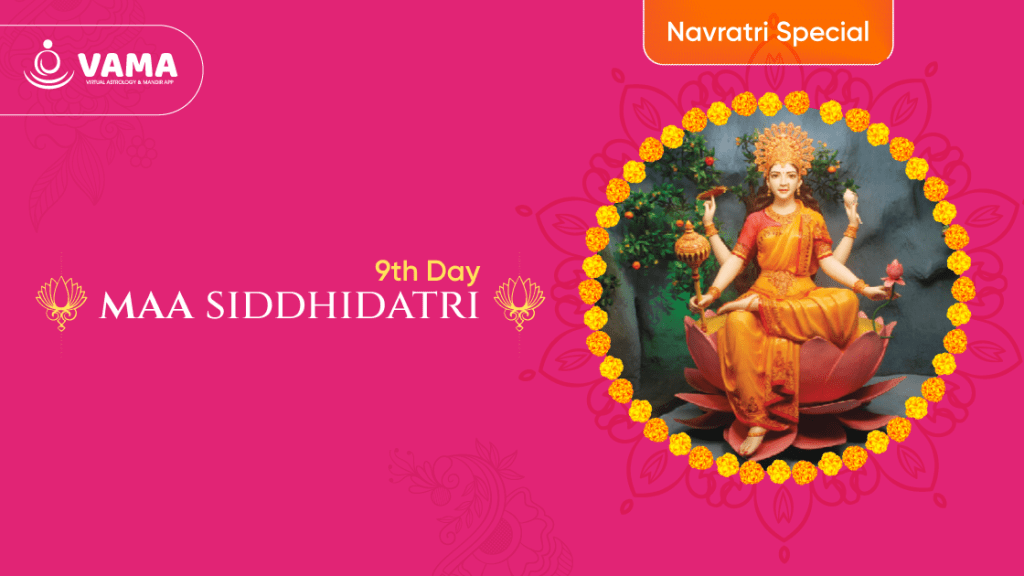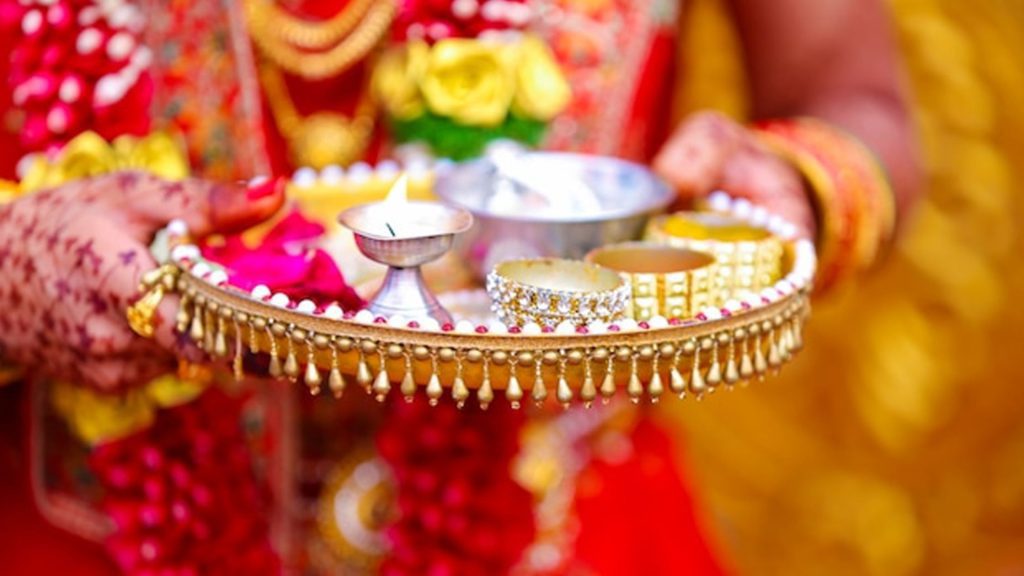Navratri 2023 Day 9: Who is Maa Siddhidatri? Know Maha Navami significance, timings, samagri, puja vidhi and mantra
Join us on a captivating exploration of the significance of the ninth day of Navratri, where we'll delve into the rituals that connect us with Maa Sidhidhatri’s potent energy, and unveil the profound symbolism that defines this day's celebration.

Have you ever wondered about attaining spiritual growth, wisdom, and the fulfilment of all your desires? Today, on the ninth day of Navratri, our focus is on Maa Siddhidatri, the bestower of divine blessings and spiritual realisation. She is often depicted as a radiant goddess seated on a lotus or riding a lion. Her name ‘Siddhidatri’ signifies the giver of ‘siddhis,’ which are extraordinary spiritual powers and attainments.
Join us on a captivating exploration of the significance of the ninth day of Navratri, where we’ll delve into the rituals that connect us with Maa Sidhidhatri’s potent energy, and unveil the profound symbolism that defines this day’s celebration. From the colour of the day to the mystic chants, let’s step into the realm of divine knowledge on Navratri’s ninth day, where introspection and spiritual growth reign supreme.
The Significance of Day 9: Attaining Spiritual Fulfilment
As we honour Maa Siddhidatri on this day, we seek her blessings for spiritual growth, enlightenment, and the fulfilment of our innermost desires. She represents the culmination of our spiritual journey, where devotion and meditation lead to profound realisations. Maa Siddhidatri is a reminder that with sincere dedication, one can attain spiritual heights.
The Colour associated with Her: Purple
In the vibrant tapestry of Navratri, each day is adorned with a unique colour, and on the ninth day, purple takes centre stage. Purple symbolises the confluence of the energies from all the previous days, representing the harmonious balance and spiritual fulfilment that Maa Siddhidatri embodies. Wearing purple attire on this day is a way to connect with her divine blessings and spiritual grace.

Rituals and Traditions
Devotees celebrate this day with utmost devotion and reverence. The day typically begins with a special puja (worship) dedicated to Maa Siddhidatri. Offerings of flowers, incense, and sacred scriptures are made to the goddess. Devotees also meditate and chant mantras to seek her divine blessings for spiritual awakening.

Puja Vidhi
1. Preparation:
- Begin by purifying yourself through a bath and wearing clean, traditional clothing.
- Select a clean and peaceful area in your home for the puja.
- Gather the necessary items for the puja, including:
- An image or idol of the deity you want to worship. It could be a goddess like Durga, Saraswati, or another deity based on your devotion and purpose.
- Fresh flowers, especially marigolds and other seasonal blooms.
- Incense sticks (agarbattis) for a pleasant fragrance.
- A diya (oil lamp) with oil and a cotton wick.
- Fruits, sweets (laddoos, pedas, etc.), betel leaves, betel nuts, and coconut.
- Water, milk, curd, ghee, honey, and sugar for Panchamrit (a mixture of these ingredients).
- A bell.
- A chowki (small elevated platform) for the deity to sit.
- Kumkum (vermilion) and haldi (turmeric).
- Akshat (rice grains mixed with turmeric) for offerings.
- A red cloth or chunari to drape the deity.
2. Invocation:
- Start the puja by invoking the divine presence through mantras or prayers. The specific mantras may vary depending on the deity you’re worshipping.
3. Abhishek:
- Perform abhishek, which is a ceremonial bathing of the deity’s idol with Panchamrit (mixture of milk, curd, ghee, honey, and sugar), water, and then clear water. You can recite relevant mantras during this process.
4. Offerings:
- Place fresh flowers, light the incense, and kindle the diya.
- Apply chandan (sandalwood paste) and kumkum to the deity.
- Offer fruits, sweets, betel leaves, and coconut as a symbol of devotion.
5. Chanting and Bhajans:
- Recite hymns, stotras, or sing bhajans dedicated to the deity. This is a way of expressing your love, reverence, and devotion.
6. Aarti:
- Perform the aarti by circling the lit diya in front of the deity. You can sing an aarti song while doing this.
7. Meditation and Prayers:
- Spend some time meditating, seeking blessings, and connecting with the divine presence. You can also offer your personal prayers and express your gratitude.
8. Distribution of Prasad:
- Share the prasad (blessed offerings) with your family members and other devotees present.
9. Thanksgiving and Closing:
- Conclude the puja by seeking the deity’s blessings and guidance for your life.
- Bow in humility and thanksgiving for the divine presence.
The Mantra of Maa Siddhidatri
One of the powerful mantras associated with Maa Siddhidatri is:
“ॐ देवी सिद्धिदात्र्यै नमः”
(Om Devi Siddhidatri Namah)
This mantra is chanted with devotion to invoke the blessings of Maa Siddhidatri for spiritual realisation and divine fulfilment.
Frequency
There is no strict rule regarding the number of times you should chant the mantra. Some people may choose to chant it a specific number of times, such as 108 or 1008, while others may chant it continuously during their worship and meditation.The most important aspect is the intent and devotion with which you chant the mantra.
Embracing Spiritual Fulfilment
The ninth day of Navratri is a profound reminder of the ultimate goal of spiritual growth and attainment. It’s a time to reflect on the journey we’ve undertaken during these nine days, seeking not just material blessings, but also spiritual blessings and enlightenment.
As we immerse ourselves in the majestic purple aura of the day, let’s not only seek Maa Siddhidatri’s blessings but also commit to continuing our spiritual journey with sincerity and devotion. Just as she grants siddhis, may we too seek higher wisdom and realisation in our spiritual pursuits.
As we bid adieu to the ninth day of Navratri, may the divine blessings and spiritual fulfilment of Maa Siddhidatri continue to guide us, leading us toward a life filled with profound realisations, inner peace, and the highest form of spiritual attainment.
“In her divine presence, we find the culmination of our spiritual quest and the eternal grace of enlightenment.”





